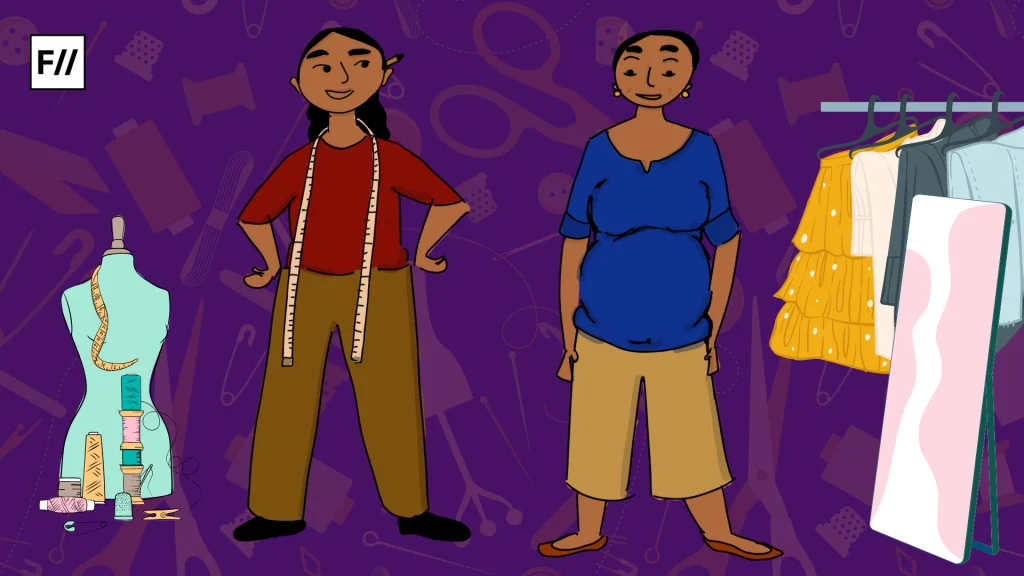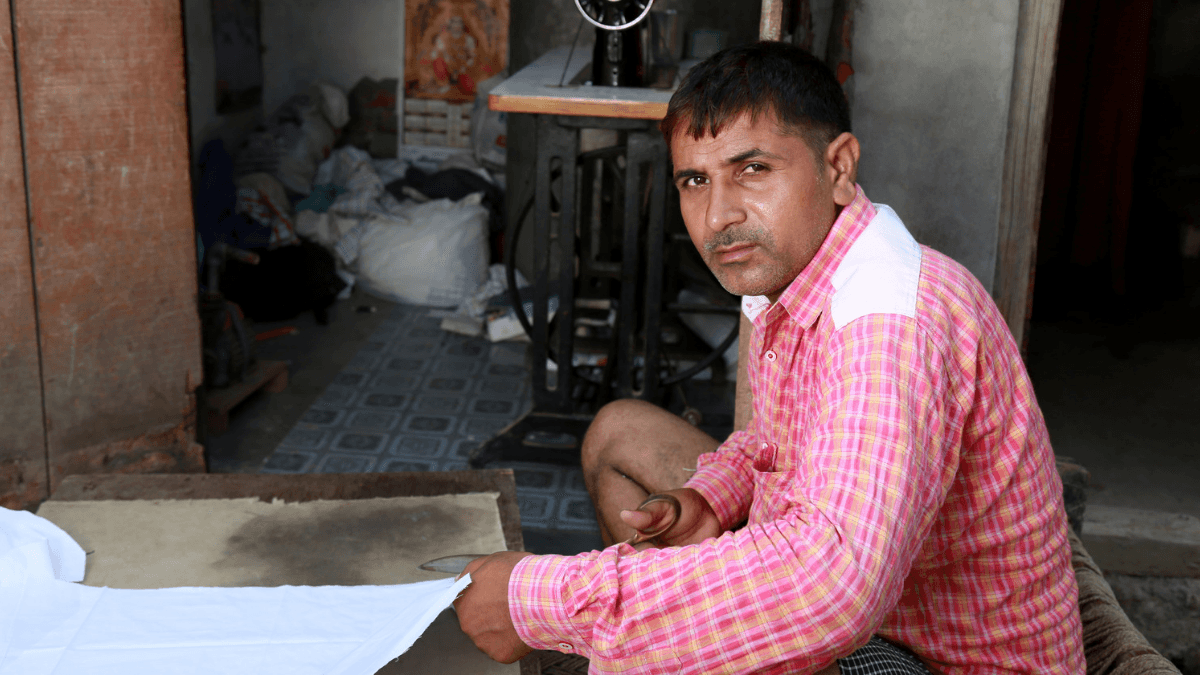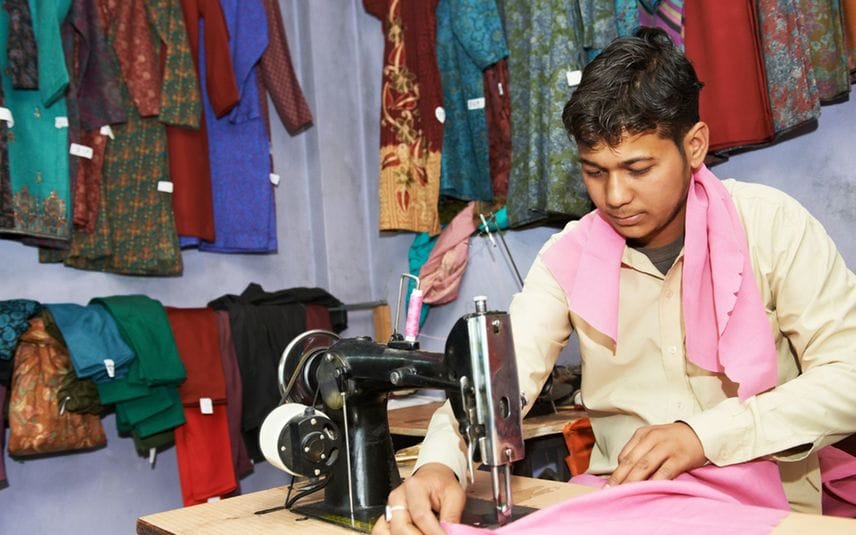The recent suggestion by the UP State Women’s Commission that male tailors should not be allowed to stitch a women’s dresses and male barbers should not cut women’s hair has spurred a great political uproar about women’s safety, regarding their ability to choose their dress and hairstylists, and the welfare of the tailors who have been prevented from performing these services.
On November 8, 2024, the Uttar Pradesh State Women’s Commission said that only a female dress tailor should be given the right to measure clothes for women and a man should not trim woman’s hair.
This effort put forward in the guise of safeguarding against envisaged harassment is questionable as it imposes gender roles, challenges the existing societal norms and has vast economic importance in a region where culture is strong.
The proposal: A protective measure or a step backward?
On November 8, 2024, the Uttar Pradesh State Women’s Commission said that only a female dress tailor should be given the right to measure clothes for women and a man should not trim woman’s hair. This initiative is couched in terms of increasing insecurity for women in many places, including fitness facilities and salons. According to Himani Agarwal a member of the Commission, this proposal is a result of preventing ‘bad touch’ plus any form of uncomfortable conduct emanating from male employees in these lines of work. Even if the purpose is to protect, it opens up very important questions of gender bias and the economic consequences.
As much as this proposal seems to have been designed to offer a protective impulse, it has monumental questions that surround it. Its advocates suggest that such measures reveal an orthodox thinking that does not eradicate harassment permanently; rather, it changes the focus from men, the offenders to women, the victims by legally confining and regulating their freedom. Such a practice is dangerous as it displaces gender segregation in the workplace instead of fighting it as necessary for safety in other fields of work.
Economic implications for male tailors
The business consequences of this proposal cannot be emphasised on enough. In Uttar Pradesh, where men are so dominant in the profession of tailoring this decision may actually put in danger the jobs of so many men who are into this profession. Most tailors depend on their trade to earn a living for their families, and denying them a good percentage of their likely customers frost the family’s sustenance.
Besides, this suggestion here can be viewed as a thrust towards the reduction in the quality of women’s clothes in the market. Due to the scarcity of female tailors as compared to male tailors, ladies may afford to be serviced by male operators in a customised manner. It can also denote a possibility of a decrease in competition and therefore the prices for the said services may increase making women’s choice and autonomy even more limited.
Sewing is not simply work; it is work that has been inherited through generations for many people.
Sewing is not simply work; it is work that has been inherited through generations for many people. This change in policy may well undermine these traditional practices and lead to many tailors either being unworked or under-worked. Also, it leads to questions to how such policy will be implemented or if the policy will ensure that the affected will be given other sources of employment.
Gender stereotypes in professional proposals
Women have over the years demanded and struggled to be given equal opportunities as men in different capacities in society. The proposal also raises another discursive question concerning the gender issues in the Indian society. This promotes the perception that men are inherently predatory to women — a mindset that as a society will only reinforce instead of eradicating misogyny. Strict gender segregation at the workplace should not be a priority because what is required is training on respect and consent between the genders.

Moreover, such measures might stimulate the creation of the climate by which men would feel uncomfortable or unwanted in the occupations that have been considered feminine. That means, for example, there is a clear threat that these industries will lose a number of talented queer individuals.
However, there is fear that such policies extend creation of a gender divide where people work, not with the purpose of merging outputs or coming up with common goals of a team, but with the desire of fighting for a cause of their gender. Policies that are intended to increase women’s protective factors, should, in a perfect world, contain strategies that involve men as supporters and not as hazards.
The role of education, awareness and gender sensitisation
In order to tackle matters of harassment meaningfully education and awareness is crucial. These programmes may reach out to women as well as men in order to help them define and appreciate the degree of professionalism in workplaces. In place of restricting the gender in the enclosed professions such as tailoring or beauty services, appropriate measures could be taken through sensitisation programmes through training of service providers on appropriate conduct with clients.
Moreover, when the commission recommends installing CCTV cameras in salons or tailoring shops, it will discourage inappropriate touch and can be a good method to avoid improper conduct without closing the shops of men.
Moreover, when the commission recommends installing CCTV cameras in salons or tailoring shops, it will discourage inappropriate touch and can be a good method to avoid improper conduct without closing the shops of men. These measures would enable women to feel safe and at the same time have equal access to professional services regardless the gender of the service providers.
Navigating safety and autonomy
This case put forward by the Uttar Pradesh State Women’s Commission is interestingly on the cross section of safety and economy. Although used with the purpose of preventing women from being harassed it at the same time poses a threat to their self-organisation and threatens job positions in the sphere of tailoring.

Thus, it should be significant for policymakers to take into consideration, not only the most exemplary actions for women’s safety at the moment but also the long-sighted measures for women’s protection without limiting their possibilities and putting pressure on male employees. Talking to and including all the participants, women who need given services, male tailors, community representatives, etc., will become crucial in shaping policies that would indeed make services safer without violating individuals’ rights.
Last of all, any effort being made to increase safety of women should combine protective mechanisms with regard to agency and rationality, coupled with economic outcomes. Thus, the security concerns as well as pragmatic approaches should be implemented for the creation of circumstances that can treat all women and men equally and without limitations.
This is especially important to highlight the fact that these issues are best handled through multiple layered and nuanced approaches rather than through simplistic hasty approaches that may harm women but also seek to deny them their right to choose whom to interact with within a professional context.
About the author(s)
Ainee Ilyas is a writer and researcher with a strong foundation in law and human rights, specializing in the intersections of gender, social justice, and public policy. Passionate about feminist thought, her work amplifies marginalized voices and challenges conventional narratives. With experience in editorial writing, policy analysis, and rights-based research.






